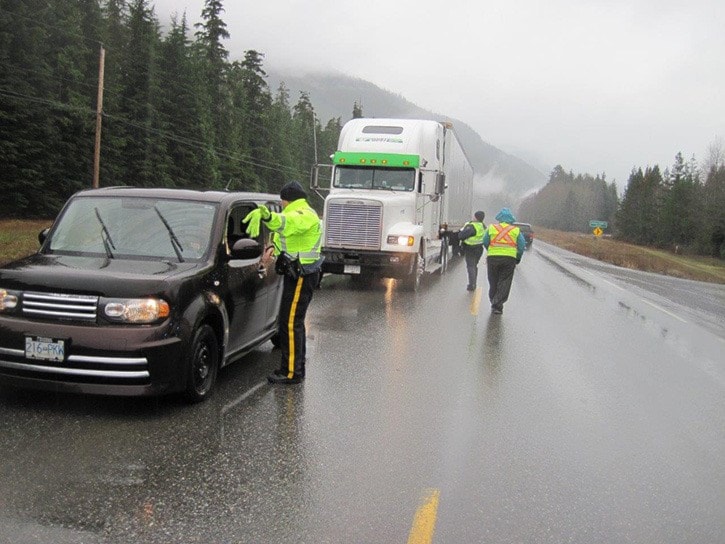LOCAL motorists appear to be taking winter driving more seriously, indicate the results of two highway checkstops conducted late last month.
“Results were very good with very high compliance and indeed significant numbers with not only winter-rated tires but also studs,” said Peter Lansdowne of Nechako Northcoast, the company which has the provincial road maintenance contract for the area.
Checks were done of vehicles for two-hour periods Nov. 22 at Onion Lake between Terrace and Kitimat and east of Terrace on Hwy16 near Gossen Creek.
At the Onion Lake stop, 157 vehicles had winter tires, 31 had mud and snow rated tires and just one vehicle still had summer tires.
At the Gossen Creek stop, 96 motorists had winter tires, 31 had mud and snow rated tires and no one had just summer tires.
Just this year, the provincial government began accepting mud and snow rated tires as sufficient to be considered winter tires.
“We are very appreciative of the preparations undertaken by motorists to be ready for winter,” said Lansdowne.
The number of vehicles equipped with winter-rated tires has been increasing over the years.
Nechako Northcoast employees, the provincial transportation ministry employees, provincial commercial motor vehicle inspectors and RCMP officers took part in the vehicle checks.
The expanded definition by the provincial government to include tires marked “M and S” for mud and snow followed a technical review conducted earlier this year.
Previously it had only recognized the tires with the snowflake symbol, or tires equipped with chains, as appropriate for some highways in B.C. and drivers without those specific tires or using chains could face fines.
But beginning this winter season, and resulting from a technical safety and speed review, the provincial transportation ministry says it will now accept tires bearing the ‘M and S’ symbol as winter tires as outlined in provincial legislation. “Advances in tire technology have resulted in various tires having the characteristics to meet the winter tire definition,” the review indicated earlier this year.
“A review of the current [winter tire] definition found that both mud and snow and mountain/snowflake rated tires are captured by the existing legislation but not explicitly stated,” it continued.
Still, snowflake symbol tires generally must provide traction of at least 10 per cent greater than a standard mud and snow tire to carry the snowflake symbol and be softer and pliable in temperatures of less than 7 degrees Celsius and have more traction on ice.
And regardless of the symbol, winter tires must be in good condition.
“This means that they have to have adequate tread (no less than 3.5 mm) and no bald spots or abnormal wear,” said Constable Philip Crack of the RCMP’s West Pacific Region Traffic Services section which patrols northwest highways.
Along with an expanded winter tire definition, the province has also reduced the time period winter tires should be on vehicles.
The old period was from October 1 to April 30 and it is now October 1 to March 31.
A public opinion poll also published by the transportation shows that 69 per cent of survey respondents said they change their tires when the cold snap hits with 63 per cent of those who do switch tires preferring ones with the mountain/snowflake symbol.
